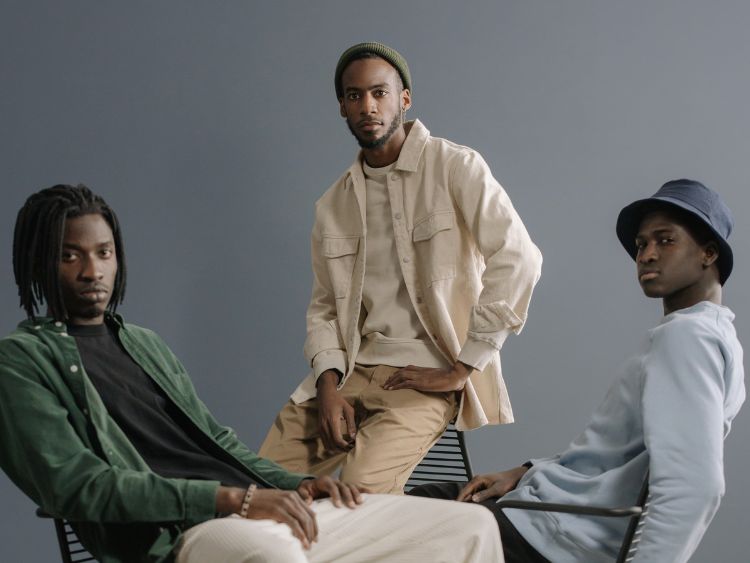In the constantly evolving fashion industry the word the term “fashion brand” is of immense importance. It’s not only about clothing or accessories, it’s about creating a distinctive brand that connects with consumers on the personal level. This article will look at the characteristics of a successful fashion brand and the process they use to establish their position and how they can thrive in an extremely competitive marketplace.
What Is a Fashion Brand?
Fashion brands are much more than the logo or name. It’s the character behind a line of goods. It is a reflection of a story, vision, and lifestyle that the audience it targets is aspiring to adopt. From couture-style houses with high-end designs to sustainable streetwear brands fashion labels cater to particular preferences, styles and values.
What makes the clothing brand different is their capacity to express its distinct brand’s identity through its design, marketing and customer interactions. For example the luxury fashion brands such as Gucci as well as Louis Vuitton exude exclusivity and luxury, whereas the more casual brands such as Levi’s or Converse are synonymous with the comfort as well as timeless style.
Crafting the Identity of a Fashion Brand
Every fashion brand that is successful has a clear mission and vision. These are the foundations that determine everything from the design of products as well as marketing strategy. The mission usually explains why the brand is there, perhaps to change fashion that is eco-friendly or revive a trend that was once popular. In addition, the vision depicts the place the brand wants towards in the next decade.
A well-established fashion brand recognizes the needs of its customers. By understanding the preferences as well as the habits and preferences of their target group they can adapt their offerings to make lasting connections. For instance, younger audiences may gravitate towards companies that are committed to inclusiveness or sustainability.
The aesthetics of a fashion brand’s logo as well as its colors and overall style are equally important. These elements should be uniform across all platforms in order to create recognition and trust. Take Nike’s Swoosh for example and Chanel’s interlocking Cs These iconic symbols are instantly recognizable and associated with their brand’s values.
Marketing Strategies That Define a Fashion Brand
In this digital age the success of fashion brands are in a state of flux. style brand succeeds or fails due to its capacity to effectively promote itself. Social media has emerged as an essential tool to connect with the public. Platforms such as Instagram and TikTok let brands showcase their offerings as well as interact with followers and even generate viral trends.
Collaborations are a different strategy. Collaborations with influencers, celebrities as well as other companies could aid in expanding reach and attracting new customers. For example, the collaboration of Adidas with Kanye West gave birth to the popular Yeezy collection, which has redefined sneaker fashion and.
Storytelling is a crucial factor in the success of a fashion company. Customers are drawn to brands who share their beliefs or share captivating stories through their campaigns. A brand that conveys the journey of a brand, for example, the commitment to use sustainable fabrics or to celebrate the richness of its culture–inspires emotional connection with its customers.
Challenges in the World of Fashion Brands
The process of establishing and maintaining an established fashion brand doesn’t come without obstacles. The market is extremely competitive, with numerous companies competing for the same market share. The latest trends come and go in a flash, which requires companies to keep up with the times.
Furthermore, global crises such as the pandemic have changed consumer habits. The consumer now values convenience and practicality over expensive designs. However demands for ethical practices has risen as more and more consumers are examining the ethical and sustainable practices of the brands they love.
To meet these challenges the brands have to be adaptable and innovative. Making use of technology, like artificial intelligence-driven personalization or fitting rooms that are augmented with reality can provide a brand with an advantage on the market.
The Future of Fashion Brands
Future success of clothing companies is in being able to recognize and adapt to changing consumer expectations. Sustainable isn’t just just a buzzword but it’s an essential requirement. Companies that use eco-friendly materials, cut down on waste and ensure ethical production practices are most likely to enjoy long-term growth.
Inclusion is a different area in which brands need to excel. Customers are now expecting an array of representation in their campaigns as well as products that are geared towards every shape, size and backgrounds.
Technology is shaping what fashion’s future. Fashion shows that are virtual as well as AI-driven styling advice and even virtual clothing to be used as avatars is becoming increasingly popular and defining a new era in the fashion industry.
Conclusion
A fashion brand is more than just the clothes it sells. It’s an expression of values, culture, and the imagination of. To be noticed a brand has to not just produce high-quality products, but also craft an identity that resonates with its customers. In a world where fashion trends are constantly changing, staying true and embracing new ideas is essential to succeeding in the highly competitive fashion market.
The path of an established fashion brand can be demanding and rewarding, it requires creativity, agility and a thorough knowledge of the people it is targeting. As the fashion industry evolves the brands that mix tradition and new ideas will make a lasting impression.
Authoritative Sources
- www.businessoffashion.com
- www.vogue.com
- www.fashionrevolution.org
- www.forbes.com/fashion

